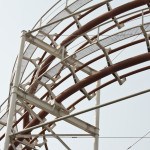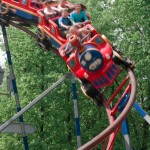
Many people wrongly believe that whenever an amusement park guest sustains an accidental injury, and claims or litigation follow, that the park is financially responsible. Liability depends on a number of circumstances relating to the incident. To properly investigate, claims professionals need to understand the issues faced by the amusement industry.
Amusement parks present unique challenges due to the diverse risks inherent in their operation. Claims can arise in all areas of a park, including its thrill rides, theaters or stadiums, restaurants, restrooms, water play features, parking lots and walkways. Claims can also arise from the areas of food or alcohol service, security matters and accessibility issues.
To provide the safest possible experience for guests, amusement park operators generally are well-trained to investigate accidents and identify potential hazards. Most amusement parks have investigation policies and procedures that dictate who should respond, what to look for, how to address the injured guest, how to document the scene, and what evidence to preserve. Additionally, many parks utilize specialized investigation forms and checklists to ensure the necessary information is obtained.

Accidents can be stressful and the initial focus, quite properly, should be on securing the area and providing the injured party proper care and attention. It is during these moments, however, when witnesses and evidence can disappear. Also, the initial investigator might not have access to other pertinent information such as maintenance and operations manuals, inspection documents, and accident histories. Thus, it is not always possible to perform a complete investigation during the initial response and, as a result, claims professionals frequently need to gather additional information and evidence.
While the circumstances of almost every accident are unique—and investigations should be tailored to the specific situation—there are several basic questions to be answered to evaluate potential exposure:
- What caused the accident or injury?
- Was the condition unreasonably dangerous?
- What caused the condition?
- Did the claimant’s failure to use reasonable care cause or contribute to the accident?
- Did anyone else cause or contribute to the accident?
- Did the park know about, or should it have known about, the dangerous condition?
- Does this type of hazard occur often enough that the park should anticipate it?
- Did the park have appropriate policies and procedures to prevent or promptly correct such conditions?
- Did the park follow its own policies and procedures?
- Did the park comply with any applicable statutes, regulations, and industry standards?
- For inherent or known risks, were there appropriate instructions and warnings?
- Is there a valid pre-participation release or other agreement that will shift liability?

The answers to some of these questions might be gleaned from initial investigation materials, including guest statements, witness statements, incident reports, photographs, and surveillance videos. For the unanswered questions, prompt follow up by the claims professional can lead to important supplemental information. Depending on the applicable statute of limitations, lawsuits may not be brought for several years after an accident occurs. Since memories fade, and evidence and witnesses can disappear, it is critical to gather and document this information as quickly as possible after an accident. Other immediate actions the claims professional should consider include:
Obtain a recorded statement, when possible, from the claimant. Even when a potential claimant provides a written statement at the scene, every attempt should be made to obtain a recorded statement. Generally, the interviewer should obtain basic background information, confirm the claimant’s story about how the accident happened, identify any known witnesses, and verify all of the injuries allegedly sustained. The interviewer also should inquire whether the claimant has any prior similar injuries or previous bodily injury claims.
Take witness statements and employee statements. Identifying all the pertinent witnesses and employees is not always easy, especially if this information is not contained in the initial investigation materials. One way to identify employees with knowledge of the incident is to request schedules for those individuals who worked in the area at the time of the accident. If a new shift started just prior to the incident, a claims professional might request the identity of the employees on duty during the prior shift as well. Park management may also be able to help identify employees with relevant information and can usually explain the protocol and procedures for the area of the park under scrutiny. Sometimes independent adjusters or investigators, who can personally meet with these individuals, can be of assistance.
Photograph the scene and preserve evidence. If the scene was not photographed immediately after an incident, it can still be helpful to obtain photographs documenting where the accident occurred and the area’s general condition. Any surveillance of the incident should be preserved, if available. Similarly, pertinent inspection sheets, checklists, maintenance records, safety audit records, manuals, and certifications should be secured. These materials provide documentation and evidence that the park used reasonable care with respect to inspections, maintenance and operations. Further, losing or destroying relevant evidence can expose an amusement park to claims of spoliation. Letters from attorneys requesting preservation of evidence can trigger obligations and should never be ignored.
Closely examine the pre-participation release. Some jurisdictions approve the use of pre-participation releases, and if the claimant signed one, it should be examined based on the law of the applicable jurisdiction. Ideally, the validity of a release will have been verified prior to an incident.
Review all contracts associated with the incident. If an incident involves an attraction, contracts with the manufacturer should be reviewed to determine if there are any pertinent indemnification provisions. For other types of incidents, contracts with architects, contractors, or other external entities might provide a means of shifting liability.
A word of caution: While investigations should be documented appropriately, adverse evidence should not be gratuitously created. Investigation findings often constitute protected work product, but the discoverability of this information varies from state to state. Claims professionals should understand which investigation materials might be discoverable in a particular case.
Amusement park claims present unique circumstances and challenges, and the claims professionals who handle them should be prepared for the complexities they present.
 Thomas F. Brown, Esq. is an attorney with the Orlando office of Marshall Dennehey Warner Coleman & Goggin, (315 E. Robinson Street, Suite 550). As part of his amusement and entertainment practice, he represents theme parks, golf courses, water parks and retail stores. He can be reached at (407) 420-4392.
Thomas F. Brown, Esq. is an attorney with the Orlando office of Marshall Dennehey Warner Coleman & Goggin, (315 E. Robinson Street, Suite 550). As part of his amusement and entertainment practice, he represents theme parks, golf courses, water parks and retail stores. He can be reached at (407) 420-4392.
Was this article valuable?
Here are more articles you may enjoy.

 California Bill Would Require Insurer Claims Handling Plans, And Double Penalties
California Bill Would Require Insurer Claims Handling Plans, And Double Penalties  Munich Re: Insured Losses From Wildfires, Storms and Floods Hit Record High
Munich Re: Insured Losses From Wildfires, Storms and Floods Hit Record High  Palantir Poaching Suit Called ‘Scare’ Tactic by Ex-Employees
Palantir Poaching Suit Called ‘Scare’ Tactic by Ex-Employees  What The Return of California’s ‘Death Discount’ Means for Litigation
What The Return of California’s ‘Death Discount’ Means for Litigation 